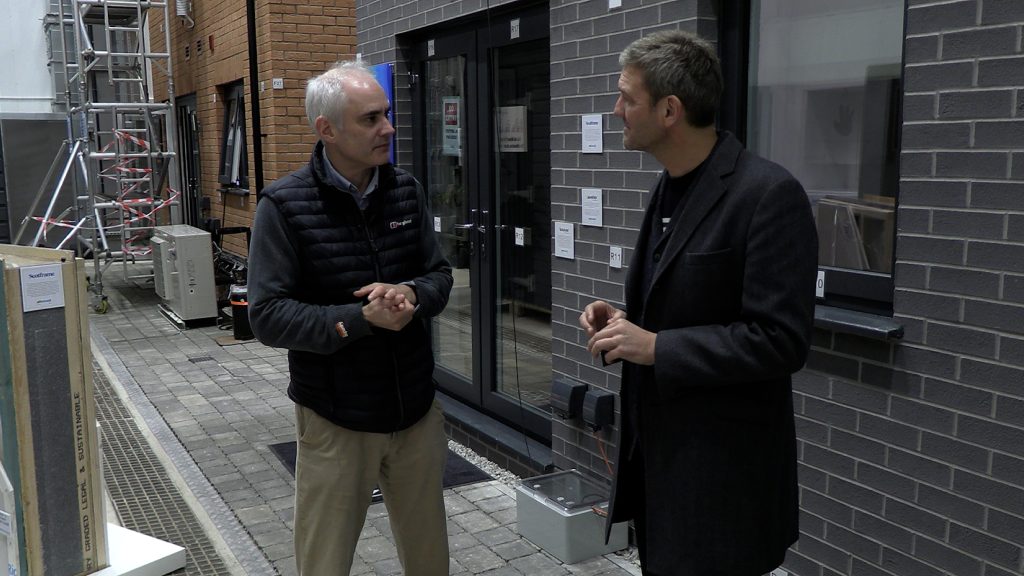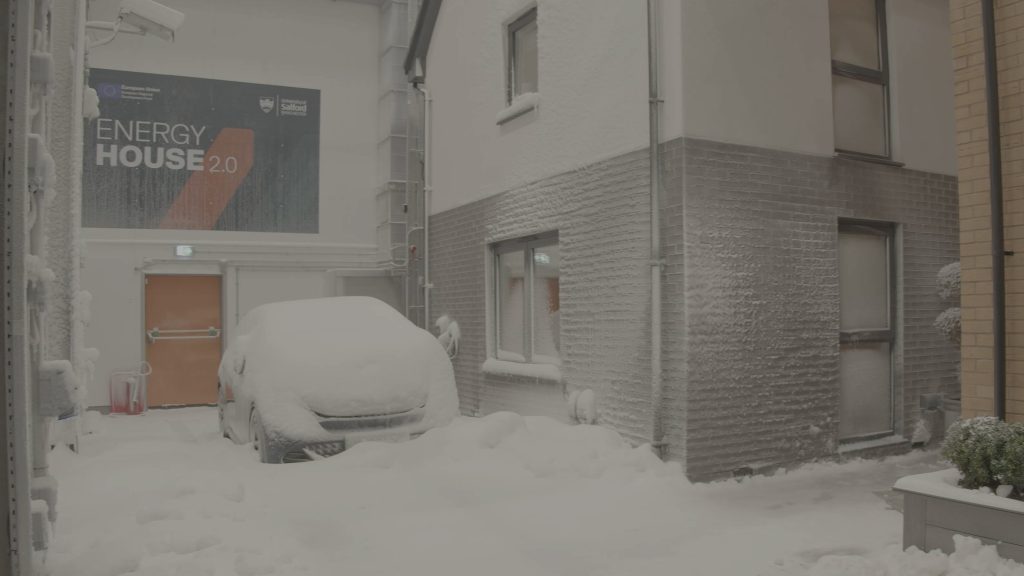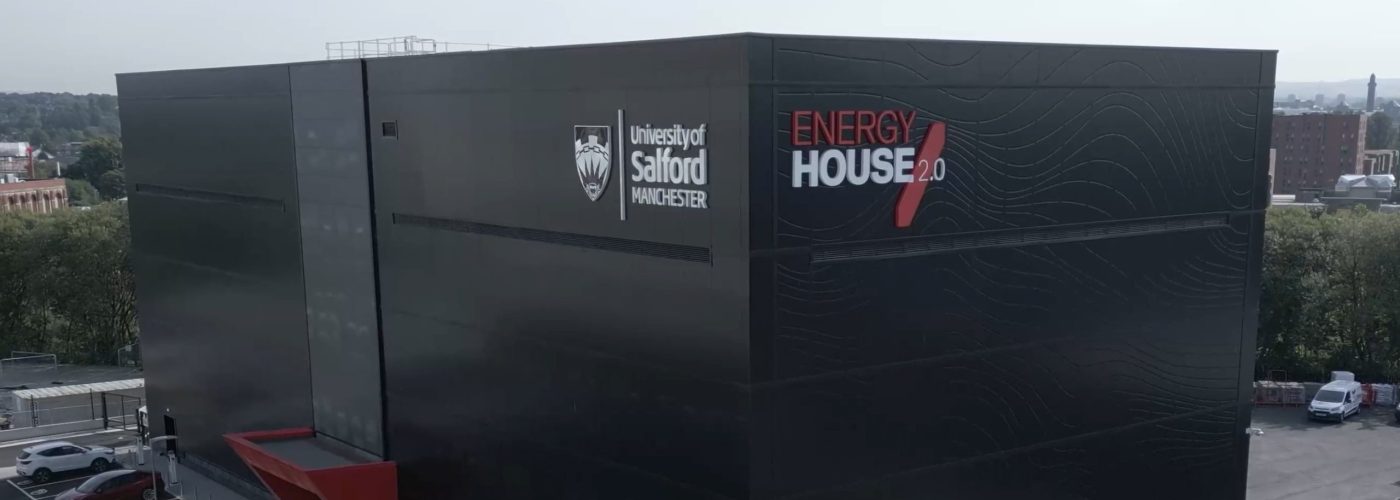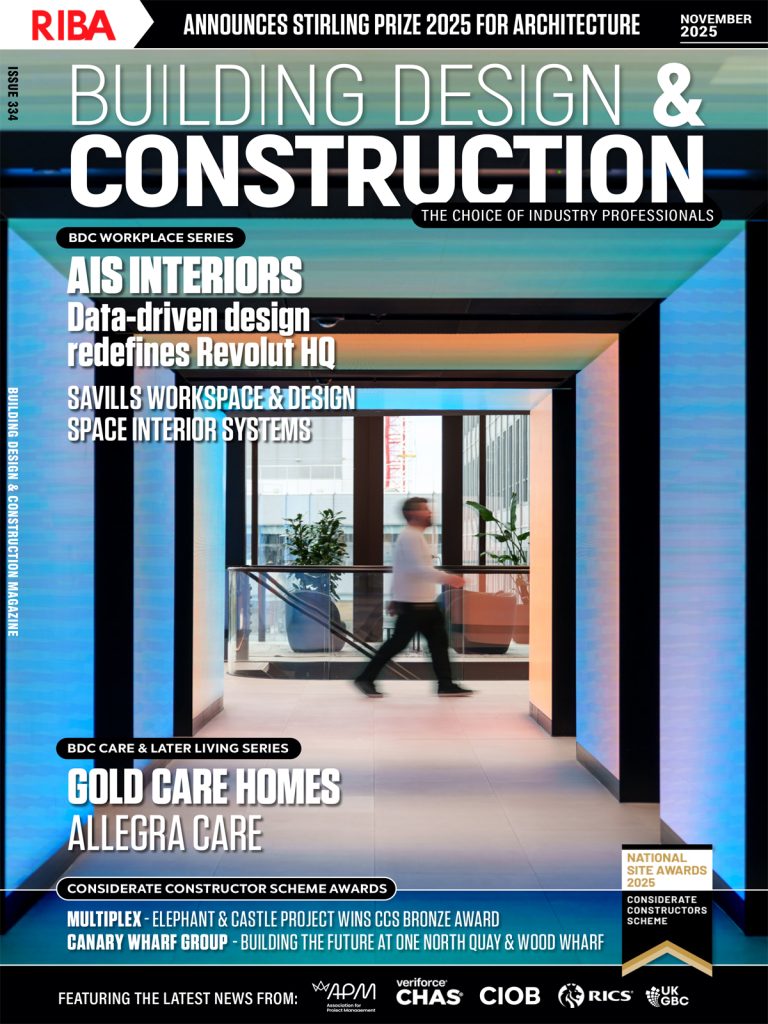British Gypsum and Isover have launched episode six of their Building Better video series – taking viewers on a tour of the cutting-edge Energy House 2.0 facility, where academics are closing the gap between the design and performance of new build properties.
The largest test and research facility of its kind, led by the University of Salford, Energy House 2.0 is the world’s first fully climate-controllable new build home. British Gypsum and Isover supported the exciting project to construct the three-bed detached new build home, designed to meet future performance and regulation requirements.
In the previous episode, the Building Better series also unveiled Energy House 1, which features a Victorian end-terrace home. Both projects are helping to revolutionise the way in which the industry designs, builds and retrofits homes for a future of more sustainable and zero-carbon living.
In this latest episode, Prof Richard Fitton, Professor of Energy Performance of Buildings for the University of Salford, takes us behind the doors of this high-tech facility where real houses are tested under simulated extreme weather conditions to evaluate energy performance, running costs and resilience.
“With too much uncertainty in field testing conditions, Energy House 2.0 allows us to recreate the conditions of anywhere in the world where people live. As part of our testing, we can fast forward through climate change prediction, going 30, 50, even 80 years into the future to test how the house copes with those changes,” said Professor Richard Fitton.
“Once testing is complete, we will then have huge amounts of measured data that we can share with the industry to help inform how they create smart living for the future. Research from Leeds Beckett University found in some circumstances up to a 150% gap between design and actual performance in in-field testing, whereas Energy House 2.0 has a gap of less than 10%, meaning that this is an extremely well-performing building.”
Built within a sealed environmental chamber, Energy House 2.0 can replicate a wide range of weather conditions – from rain, wind, snow and solar through to temperatures ranging from -20°C to 40°C – enabling accurate, repeatable testing that accelerates innovation and reduces real-world risk. The research spans everything from fabric performance, airtightness, and U-values across floors, windows, ceilings, and roofs, to a thermography study.


Órla Whelan, Customer Solutions and Portfolio Development Director at Saint-Gobain Interior Solutions, said: “This innovative climate-controlled testing provides us with a catalyst for speeding up the pace of development and hopefully paving a way for us to reduce our carbon emissions to zero. We are honoured to be a part of such a forward-thinking initiative.
“The accurate data that is obtained from this testing allows the academics at the University of Salford to create calibrated models of the buildings with an accuracy within better than 5%. With this huge amount of insight, manufacturers can see exactly how these buildings perform before they are even built.”
By showcasing the transformational research taking place at the University of Salford, the episode reinforces British Gypsum and Isover’s commitment to helping people live low-carbon lives through high-performance building solutions.
Hosted by renowned architectural designer and television personality Charlie Luxton, Building Better delivers inspirational and thought-provoking content through weekly episodes, available on YouTube and via the Building Better Hub.
To watch the full episode and explore more on how we’re building a better tomorrow, visit: www.saint-gobain.co.uk/building-better-hub. Or watch the episode directly on the Building Better YouTube Channel and hit subscribe to stay updated.
Building, Design & Construction Magazine | The Choice of Industry Professionals





